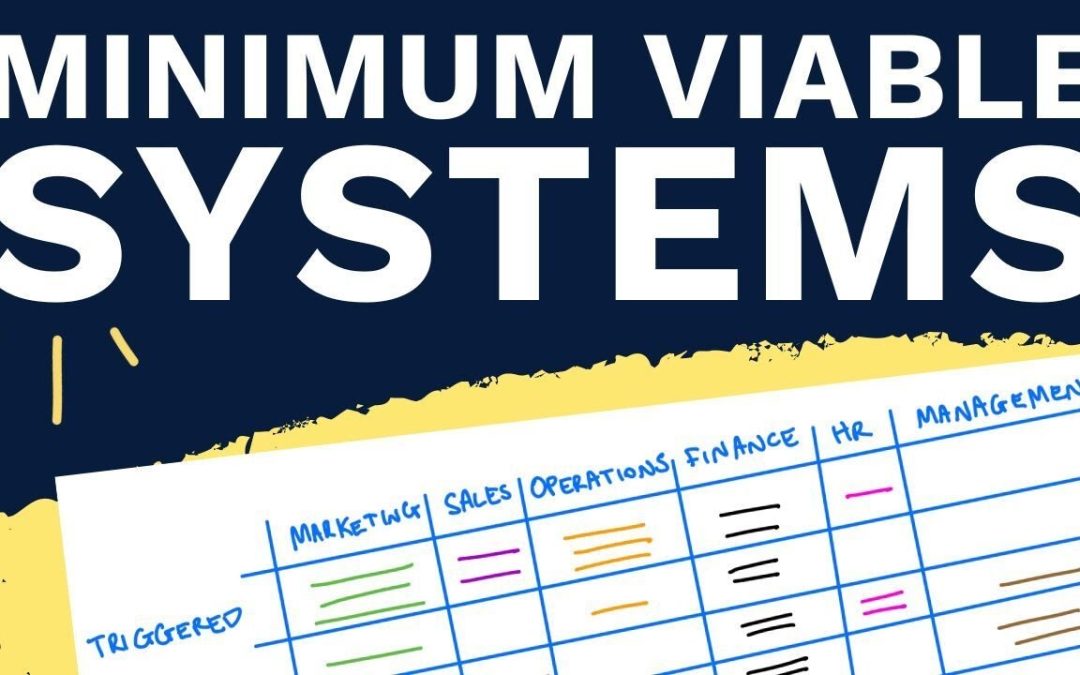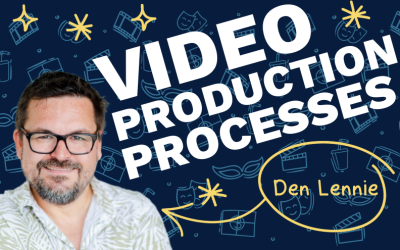You don’t need more time to systemise your business; you need more focus.
Applying the Pareto Principle (80/20) and only documenting what’s currently working within your business helps to keep you focused on making things more repeatable.
The goal should be to reach what we call Minimum Viable Systems (MVS).
This is the minimum number of systems required to run your business.
Once you’ve reached MVS, every department within your organisation is healthy — so no matter what happens, you can still deliver on your core objectives.
In this video, David Jenyns explains more and shows you how to turn business systemisation into a game.
Timestamps:
0:22 – You don’t need more time, you need more focus
0:51 – Identify what’s currently working and make that repeatable.
1:07 – Systemology is about process capture
1:35 – The goal of your Systems Champion
1:45 – What the Critical Client Flow is about
2:13 – What are Minimum Viable Systems
4:32 – Just because we don’t capture a system doesn’t mean we stop doing the process.
4:49 – How to reach your Minimum Viable Systems
5:25 – This is how you turn systemisation into a game.
Transcription:
Now the next point I want to talk about is this idea of Minimum Viable Systems, because I think some people got a little bit off track when they read Systemology and then they thought, oh yes, all I need to do is get my critical client flow in place. But there’s a little bit more to it than that. And this idea that you need more time, you don’t need more time. Excuse me. What you need is more focus. And the CCF was a way of focusing your attention.
We answered the question, I don’t know where to start and what are the first systems that I should put into place. And then we start to capture, using the critical client flow, what is currently working. This idea of making it repeatable, that’s a big one. Again, if we can identify what’s currently working, make that repeatable, you’ll get tremendous wins from doing that little coffee.
And this idea that Systemology is about process capture. We’re not reinventing new systems where we’re not making stuff up, we’re not creating things as the business owner would like them to be. We first capture what’s done. Optimization is the last stage in systemology. So it’s about capturing what works and then making it repeatable. But the critical client flow really is just step number one, you actually need to move. And this is what the goal of the system’s champion is.
The goal is to reach what I call minimum viable systems. The critical client flow is about how we get the systems in place for the business to make money, to deliver a core product or service to a single target audience so that the business can make money without key person dependency. Because we know if the business can make money and solve just about any problem in business because you can just pay to solve that problem.
So that’s level number one if you like. But once we kind of get through there and you’ve identified your system’s champion, where you actually want to reach is Minimum Viable Systems.
Now. Minimum Viable Systems. If you think about the different departments in your business Marketing, Sales, Operations, Finance, HR, and Management. So if your business is one big system and each of these is a sub-system, inside that big system, you need each of these departments to be healthy for the business as a whole to be healthy. And if we think about when certain activities happen in your business, there are going to be what I call triggered tasks.
They are tasks that happen when a trigger happens. Maybe you’ve got an inbound phone call and that means that you need to do something. You have to answer the phone, and qualify the lead pointed in the right direction. Maybe a triggered task is the client is ready to go and you need to issue an invoice. That’s what a triggered task is. There’s a range of tasks that need to be done when something happens. There are also tasks that happen on a certain cadence, whether that’s daily, weekly, monthly, quarterly, or annually.
So monthly, inside finance, maybe you have a PNL that you create. Maybe inside Sales, you have a weekly report that you like to create so you know what you’re selling. Maybe in Operations, when someone makes a purchase, you have a set of activities that happen underneath triggered tasks that then set up that product. Maybe when you hire a new team member underneath HR, you’ve got some sort of, sort of onboarding process.
There’s a range of systems in these departments. Now, if the critical client flow captures 80 20 of the business and what is required to deliver the core product or service, minimum Viable Systems catches the 20% of the systems that deliver the bulk of the result for the business. If these systems weren’t in place, that department would fall over and it wouldn’t quite work.
Now, remember that just because we don’t capture a system doesn’t mean you stop doing the thing. Things still get done. And one of the reasons you have great team members is that great team members will fill in the gaps.
But what you want to identify is what are the minimum number of systems in each department that are required to deliver the main part of the results. And if everything fell over those systems or a team member left, you’ve got the most important IP, which is the systems captured around what needs to happen in a department. You need to reach this level.
Now, this can take twelve months to get to depending on if you got a systems champion or not if they’re focused on it, and if they’re working towards it. But this is how you turn systemization into a game and this becomes a spreadsheet. And you identify what those systems are. And it’s the responsibility of the system’s champion to then make sure that they drive that through to completion. If you can do this piece, I’m telling you now, and you create this as a game, then you really start to skyrocket your business. You need to reach minimum viable systems.
I can’t say that enough. That is the game. And the critical client flow is great as step number one, that’s fantastic. But then you need to elevate and move beyond that.
There are some ideas to explore if you want to find out more and you haven’t got a copy of the SYSTEMology book, definitely check that out. I think that’s going to be really helpful for you and I’ll see you in the next video.









